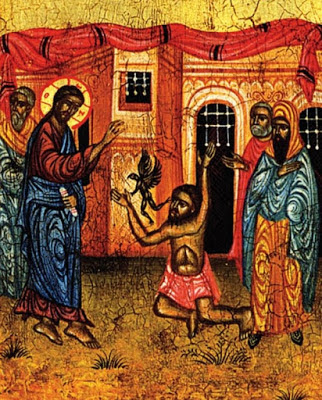The twins were born in 480 of wealthy parents. Scholastica and Benedict were brought up together until he left for Rome to continue his studies.
We don’t know much about Scholastica's early life. She founded a religious community for women near Monte Cassino, five miles from where her brother was the abbot of a monastery.
The twins visited each other once a year in a farmhouse because Scholastica was not permitted inside the monastery. They spent these times discussing spiritual matters.
According to an account written by Pope St. Gregory, the brother and sister spent their last day together in prayer and conversation. Scholastica sensed her death was close at hand and she begged Benedict to stay with her until the next day.
He refused her request because he did not want to spend a night outside the monastery, thus breaking his own Rule. Scholastica asked God to let her brother remain and a severe thunderstorm broke out, preventing Benedict and his monks from returning to the abbey.
Benedict cried out, "God forgive you, Sister. What have you done?" Scholastica replied, "I asked a favour of you and you refused. I asked it of God and he granted it."
Brother and sister parted the next morning after their long discussion. Three days later, Benedict was praying in his monastery and saw the soul of his sister rising heavenward in the form of a white dove. Benedict then announced the death of his sister to the monks and later buried her in the tomb he had prepared for himself.
O God, who for a testimony to the path of innocency didst cause the soul of thy holy Virgin Saint Scholastica to enter heaven in the appearance of a dove; grant unto us, that by her merits and intercession we may walk in such innocency of life; that we may be worthy to attain everlasting felicity; Through Jesus Christ thy Son our Lord, who liveth and reigneth with thee in the unity of the Holy Ghost, ever one God, world without end. Amen.
_______________________________________
(Pictured: Mass at Montecassino, in the Crypt Chapel
between the tombs of Ss. Benedict and Scholastica.)













